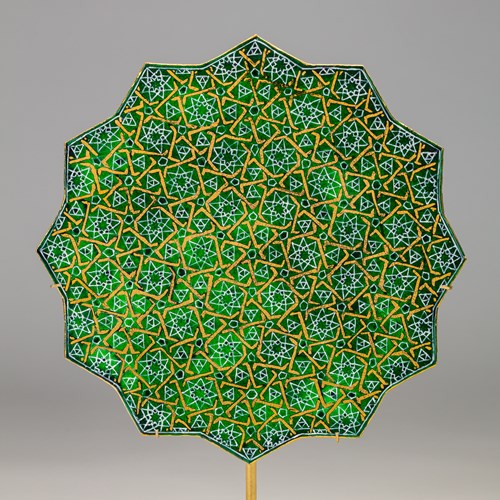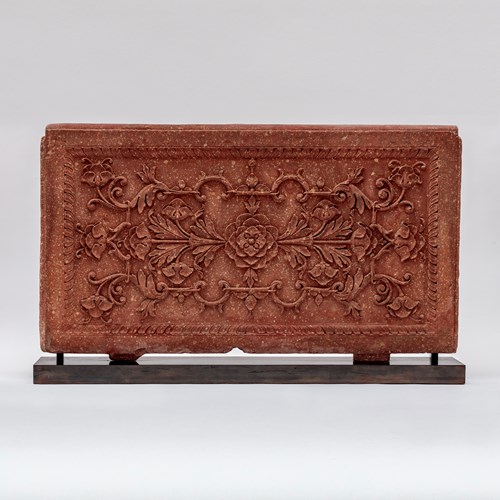Marketplace
Moplah Sword
The Moplah sword, also known as the Ayuda Cutty, originates from the Malabar Coast in Southwest India. It is named after the Mappila people, a Muslim community found predominantly in Kerala. Their characteristic wide, forward-curving blades are designed to cut through thick jungle foliage. They were worn tucked into a belt on the back, without a scabbard, blade facing upwards.1 Between 1836 and 1854, several Mappila revolts against the British resulted in an act banning Moplah knives. In March 1854, searches were conducted throughout Malabar to confiscate Moplahs, and blacksmiths were warned against making them.2 No men were allowed to keep weapons in Malabar without permission from the government.
The level of decoration on this Moplah is exceedingly rare. The steel blade is inlaid with silver on the long edge. The top of the blade, which has no guard, has delicate silver scrolling applied to it. Swirling vegetal relief engraved in silver decorates the langet, the ridged grip, and panels applied to the wooden pommel. The form is characteristic of Southwest Indian examples dating from the 18th and 19th centuries in the Metropolitan Museum of Art (accession nos 36.25.937 and 36.25.935) and the Victoria & Albert Museum (accession nos 2855(IS) and 2851(IS)), however none of these have such rich ornamentation of the hilts, blades, and langets.
n.b. accession nos are clickable links
1 Stone, George Cameron. A Glossary of the Construction, Decoration, and Use of Arms and Armor in All Countries and in All Times: Together with Some Closely Related Subjects. Portland: Southworth Press, 1934.
2 Hathika, K. ‘The Sophisticated “Moplah War-Knife” and the British Empire’, Proceedings of the Indian History Congress 80 (2019), pp. 690-695: p. 692.
The level of decoration on this Moplah is exceedingly rare. The steel blade is inlaid with silver on the long edge. The top of the blade, which has no guard, has delicate silver scrolling applied to it. Swirling vegetal relief engraved in silver decorates the langet, the ridged grip, and panels applied to the wooden pommel. The form is characteristic of Southwest Indian examples dating from the 18th and 19th centuries in the Metropolitan Museum of Art (accession nos 36.25.937 and 36.25.935) and the Victoria & Albert Museum (accession nos 2855(IS) and 2851(IS)), however none of these have such rich ornamentation of the hilts, blades, and langets.
n.b. accession nos are clickable links
1 Stone, George Cameron. A Glossary of the Construction, Decoration, and Use of Arms and Armor in All Countries and in All Times: Together with Some Closely Related Subjects. Portland: Southworth Press, 1934.
2 Hathika, K. ‘The Sophisticated “Moplah War-Knife” and the British Empire’, Proceedings of the Indian History Congress 80 (2019), pp. 690-695: p. 692.
More artworks from the Gallery





_T638563967127366840.jpg?width=500&height=500&mode=pad&scale=both&qlt=90&format=jpg)



